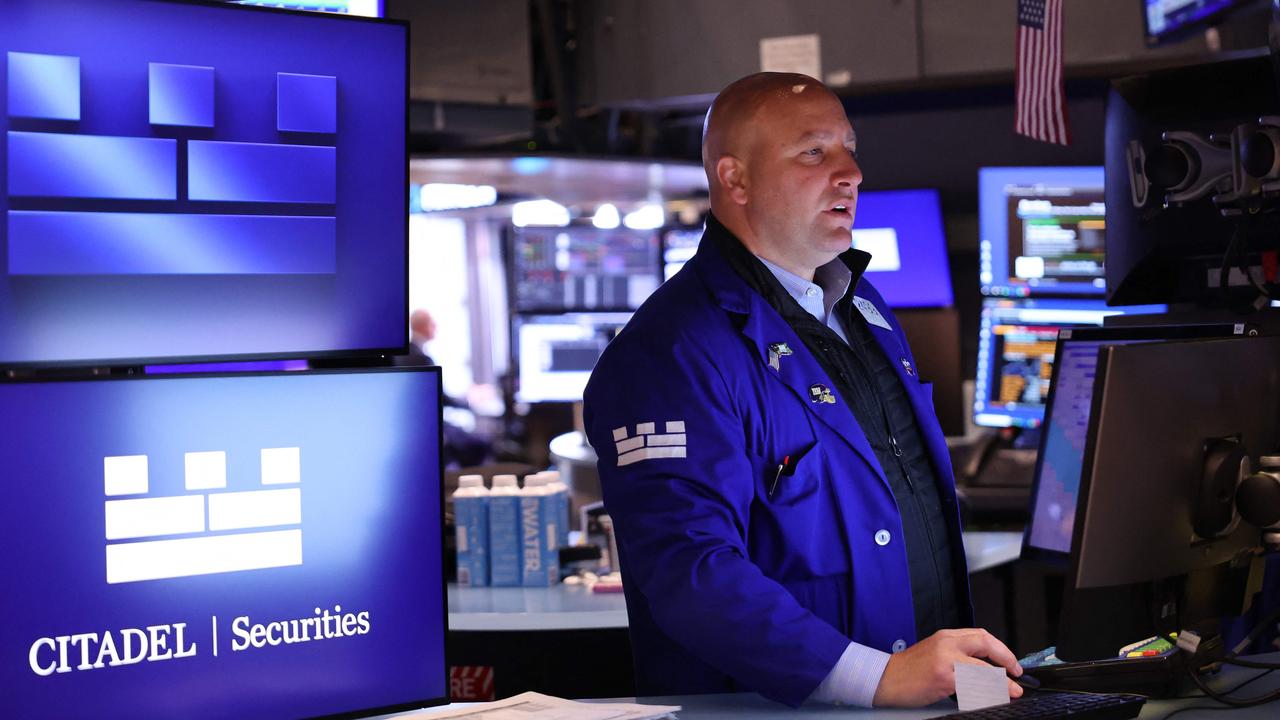Here’s why US stocks will be in hot demand in 2025, says Northern Trust
US stocks are set to lead global returns in 2025 amid solid earnings growth, undemanding valuations and scope for the rally to broaden beyond the Magnificent 7, according to one of the world’s biggest purely active fund managers.

Business
Don't miss out on the headlines from Business. Followed categories will be added to My News.
It may seem counterintuitive to say that US stocks will lead the world again in 2025.
But that’s exactly what is on the cards, according to Chicago-based Michael Hunstad, deputy chief investment officer and chief investment officer of global equities at Northern Trust Asset Mangement.
With about $US1.6bn ($2.5bn) of assets under management, Northern Trust is one of the world’s biggest purely active fund managers, so it has to take a view on global markets.
Some mean reversion may be healthy, with the S&P 500 having risen more than 50 per cent over the past two years, mostly on the back of huge gains in the Magnificent Seven tech giants.
But Hunstad sees no reason for US exceptionalism to end. US exposure to the AI boom allowed the US stockmarket to keep surging through 2024 even as inflation proved sticky and US interest rate cuts were delayed. The Fed has so far only delivered 75 basis points of interest rate cuts, about half as much as was expected for 2024 at the start of the year.
But now the world’s biggest economy looks to have avoided a recession, and the Fed is aggressively cutting rates as inflation falls.
“The overarching picture is very much ‘risk on’ in our portfolios,” Hunstad told The Australian. “We’re very bullish on US equities for a variety of reasons.
“The macroeconomic backdrop looks very favourable, economic growth is on our side, inflation is coming down. Earnings expectations are quite positive for the next several years.”

Despite angst in some circles about US president-elect Donald Trump’s policies, Northern Trust sees upside and downside risks.
One of its key tactical calls for 2025 is “buy America”, based on its view of a better economic backdrop and healthier corporate profits than most other regions.
Non-US companies will be more negatively exposed to the policies floated by the incoming Trump administration. Higher tariffs could hit Chinese and European company profits, and non-US regions would see little benefit from US tax cuts and reduced regulation. But of course, there is a wide range of potential outcomes, supporting regional diversification in portfolios.
On either side of its base case “soft landing” for the US economy, Northern Trust has an upside “reflation” scenario and a downside “supply restraint” scenario.
In all of its scenarios, it assumes that the new administration implements a combination of restrictive immigration policies, higher tariffs, income tax cuts and a push towards deregulation.
In the soft landing scenario, it assumes this policy mix has no discernible effect on inflation.
However, in both the reflation and supply restraint scenarios, it assumes that the new policies temporarily bring the disinflationary process to a halt during the first half of 2025, leading the Federal Reserve to pause its rate cutting cycle for most of the year.
Where the two alternative scenarios differ is assumptions around the effects of Trump’s policies. In the reflation scenario, a net stimulative effect results in economic growth above trend for most of 2025. In the supply restraint scenario, immigration policies and tariffs cause supply-side disruptions, sparking recession in late 2025 and aggressive rate cuts.
But Northern Trust backs a soft landing, where consumer spending – 70 per cent of the economy – slows after strong gains in 2024 but remains healthy as real disposable income growth is supported by favourable labour market conditions and falling inflation.
Assuming sustained economic growth, strong sales growth, expanding profit margins amid productivity gains from the adoption of artificial intelligence, falling interest rates and possible tax cuts, consensus is for 14 per cent earnings growth in 2025 and 13 per cent in 2026.

Some may fret as the S&P 500 trades on a forward PE multiple of about 22.4 times, well above a long-term average of 18 times and its highest valuation since 2020, when bond yields hit record lows and earnings estimates were crushed by pandemic-era lockdowns.
But while anticipating some modest multiple contraction in the coming years, Hunstad still likes US large-cap equities and feels earnings growth will outpace any multiple decline.
With US large-cap equities increasingly dominated by growth stocks that command high valuations, it makes sense for valuations to be above historic norms – remove the Magnificent Seven and valuations loom much more reasonable, but of course earnings growth elsewhere is low.
And while higher market concentration is synonymous with lower diversification and higher risk, Hunstad said the current market was nothing like that of the late 1990s dotcom bubble.
“Today, the biggest technology companies have among the highest earnings growth, profit margins, capital expenditures and free cash flow generation in the S&P 500 index,” he said. “While they also have higher price-to-earnings ratios, we feel these multiples are justified by strong fundamentals.”
But he expects the rally to broaden to US small caps, where valuations are cheaper and economic growth, falling interest rates and reshoring of US manufacturing should boost earnings growth.
Hunstad is also positive on the utility sector as another way to play the AI boom.

And he sees a decent year for the Australian stockmarket, where his expectation of a mid-single-digits percentage capital growth plus dividends is expected to give an 8 per cent return.
As for whether or not historically high valuations in Australian banks will be a problem in 2025, he points out that they have historically been very profitable on average over time.
“When you think about the Australian banking sector, it’s an oligopoly, and regardless of where the multiple is, it’s hard to have more competition that’s really going to deflate that.”
Originally published as Here’s why US stocks will be in hot demand in 2025, says Northern Trust







